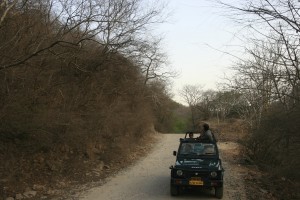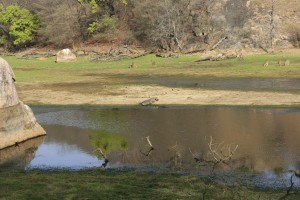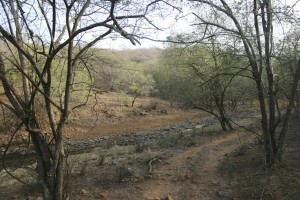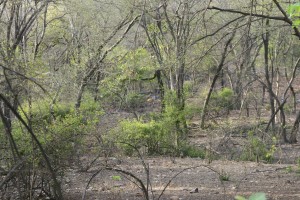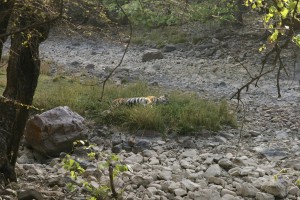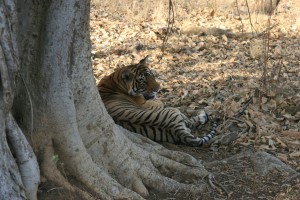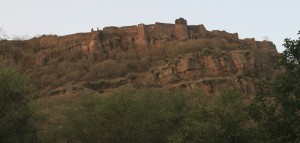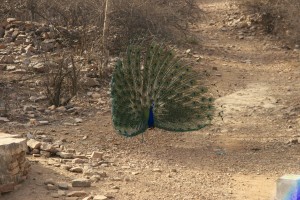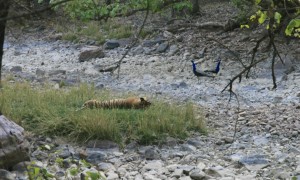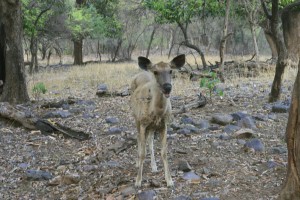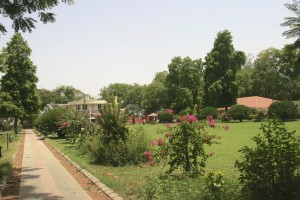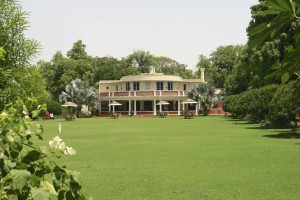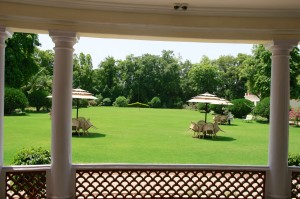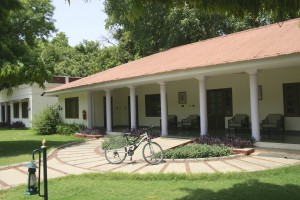Day 18/19: Rathambore National Park
in Uncategorized
I’m quite pleased I decided to start my trip in India with a visit to a national park, it’s been a highlight so far. It’s one of the easiest places to see tigers in the wild, although the chances of seeing one is much more likely in the dry season (May, ie right now).
In the dry season there is extremely limited amounts of water in the park, and the temperatures are typically 40C during the day. If your an animal, you need a source of water to survive and the safari trails that have been created typically have views of the watering holes the animals use. Only 20% of the park is actually open to tourists, but obviously if that 20% includes important water sources your going to have a better chance of spotting animals.
The park is divided into 10 zones, and as a tourist you can choose either zone 1-5, or 6-10. You never know the actual zone your going to be assigned, that’s done by a computer program. When your jeep picks you up at your hotel, you learn what zone your visiting for that particular morning/afternoon. I believe this was done to reduce bribery, IE if the officials were left to assign people to zones a “tip” would likely get you in a better zone. If a computer decides, at least theoretically it’s done fairly. There seemed to be some general talk that you could still bribe your way to a particular zone, but I never saw it happen and was never asked to give a bribe luckily.
The jeeps carry 6 people, and the trails are pretty rough as you would expect. The surface is mainly rocks and sand, meaning lots of dust is kicked up as each vehicle goes by. Each zone seems to get assigned around 6 jeeps, plus some larger trucks that carry 20 people. The park it’s self is in a valley, and even has an ancient fort within it.
The park does have many more animals than just tigers, in addition to tigers I saw lots of peacocks, monkeys, deer, birds and even an alligator. Since it’s a park and not a zoo, sometimes this is as close as you end up getting to an animal.
A close up of the same picture…
Most of the visitors to the park are Indians, I would say upwards of 90%. I encountered numerous people who have been on safaris over a 100 times over the years. Some of them seemed far more concerned with taking photos than enjoying the park or simply observing the animals. Canon L lenses were a common sight (Canon’s most expensive series of lenses), some people had lenses that would of cost upward of $8000 CDN. The typical Indian driving behaviour also carried over into the park, anything a driver could do to get even a few feet closer to some wild life was done – even if it meant cutting off another jeep or literally driving through brush. Since the jeeps were completely open, you had to be rather careful of stray branches coming into the vehicle. In parks in Canada, the general attitude is to observe wild life from a distance and not interfere with it – on Parks Canada website they recommend:
Do not approach wildlife – stay 30m (3 bus lengths) away from elk and 100m (10 bus lengths) away from bear
Indians had the opposite attitude, the closer you can get the better. When you have 7 jeeps all jockeying for position observing a tiger from a few feet away, it felt like a zoo at times. That’s not to say it was a negative experience, but an attitude like Park’s Canada has would be much better. The tigers themselves really didn’t notice the jeeps, they acted almost exactly like house cats. They were completely indifferent to the jeeps presence and pretty much ignored them. The jeeps don’t carry guns, and being open if the tigers wanted to they could certainly kill the human occupants. However I never saw one actually approach one of the jeeps, and the people who had done 100’s of safaris claimed they had never seen a tiger attack a jeep. Given that there aren’t any stories on Google about tiger attacks there, I conclude it’s probably true. Certainly if you got out and tried to approach a tiger, that would still end badly. Impressively no one actually left the jeeps while viewing the tigers.
The question your probably asking, is what’s it like around the park? If you ever wanted to experience living in the green zone in Baghdad, but didn’t want to risk getting killed a visit to India is a must. The expensive (for India) hotels basically create small versions of the west inside them – they have excellent staff who are honest and won’t try and rip you off. The grounds are beautiful, trash is picked up, lawns are maintained, cows aren’t allowed to roam free and shit everywhere.
In between the park and the resort is the town of Sawai Madhopur, the town doesn’t have anything you would really like to visit. Since all meals are included in the room rate, you really never have a reason to leave the hotel aside from going on safaris. This is really the same kind of bubble many middle class Indian’s live in, condo projects are pretty big in India from the bits of Delhi and Jaipur I’ve seen. They are all gated with security checkpoints, much like the western hotels. For richer Indian’s, gated housing communities would also be available. For them, a driver picks them up and takes them through the real India and drops them off at another gated compound. Money helps you avoid the real India in which over 70% of Indian lives, many very poorly.
